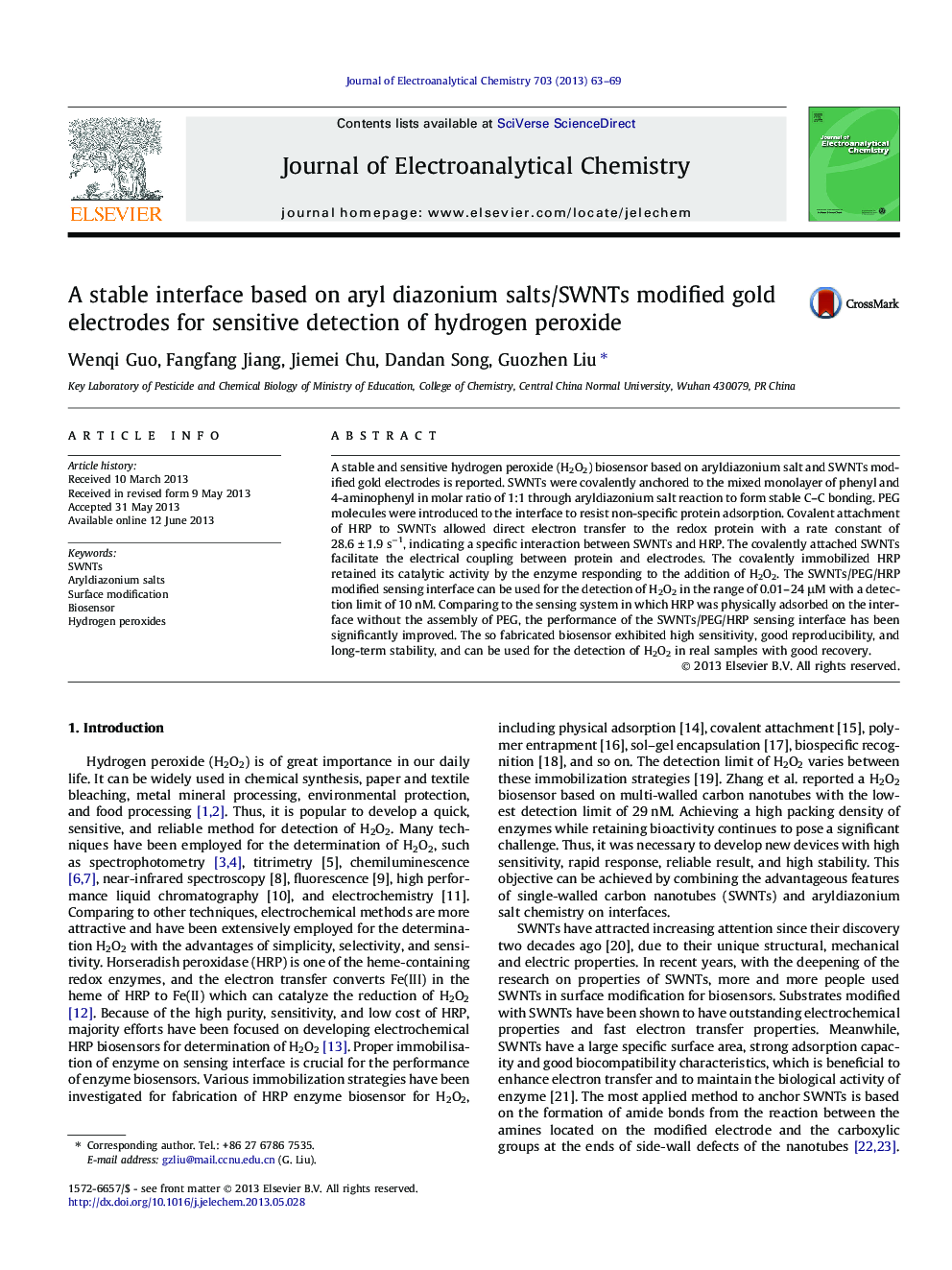| Article ID | Journal | Published Year | Pages | File Type |
|---|---|---|---|---|
| 6662916 | Journal of Electroanalytical Chemistry | 2013 | 7 Pages |
Abstract
A stable and sensitive hydrogen peroxide (H2O2) biosensor based on aryldiazonium salt and SWNTs modified gold electrodes is reported. SWNTs were covalently anchored to the mixed monolayer of phenyl and 4-aminophenyl in molar ratio of 1:1 through aryldiazonium salt reaction to form stable C-C bonding. PEG molecules were introduced to the interface to resist non-specific protein adsorption. Covalent attachment of HRP to SWNTs allowed direct electron transfer to the redox protein with a rate constant of 28.6 ± 1.9 sâ1, indicating a specific interaction between SWNTs and HRP. The covalently attached SWNTs facilitate the electrical coupling between protein and electrodes. The covalently immobilized HRP retained its catalytic activity by the enzyme responding to the addition of H2O2. The SWNTs/PEG/HRP modified sensing interface can be used for the detection of H2O2 in the range of 0.01-24 μM with a detection limit of 10 nM. Comparing to the sensing system in which HRP was physically adsorbed on the interface without the assembly of PEG, the performance of the SWNTs/PEG/HRP sensing interface has been significantly improved. The so fabricated biosensor exhibited high sensitivity, good reproducibility, and long-term stability, and can be used for the detection of H2O2 in real samples with good recovery.
Related Topics
Physical Sciences and Engineering
Chemical Engineering
Chemical Engineering (General)
Authors
Wenqi Guo, Fangfang Jiang, Jiemei Chu, Dandan Song, Guozhen Liu,
